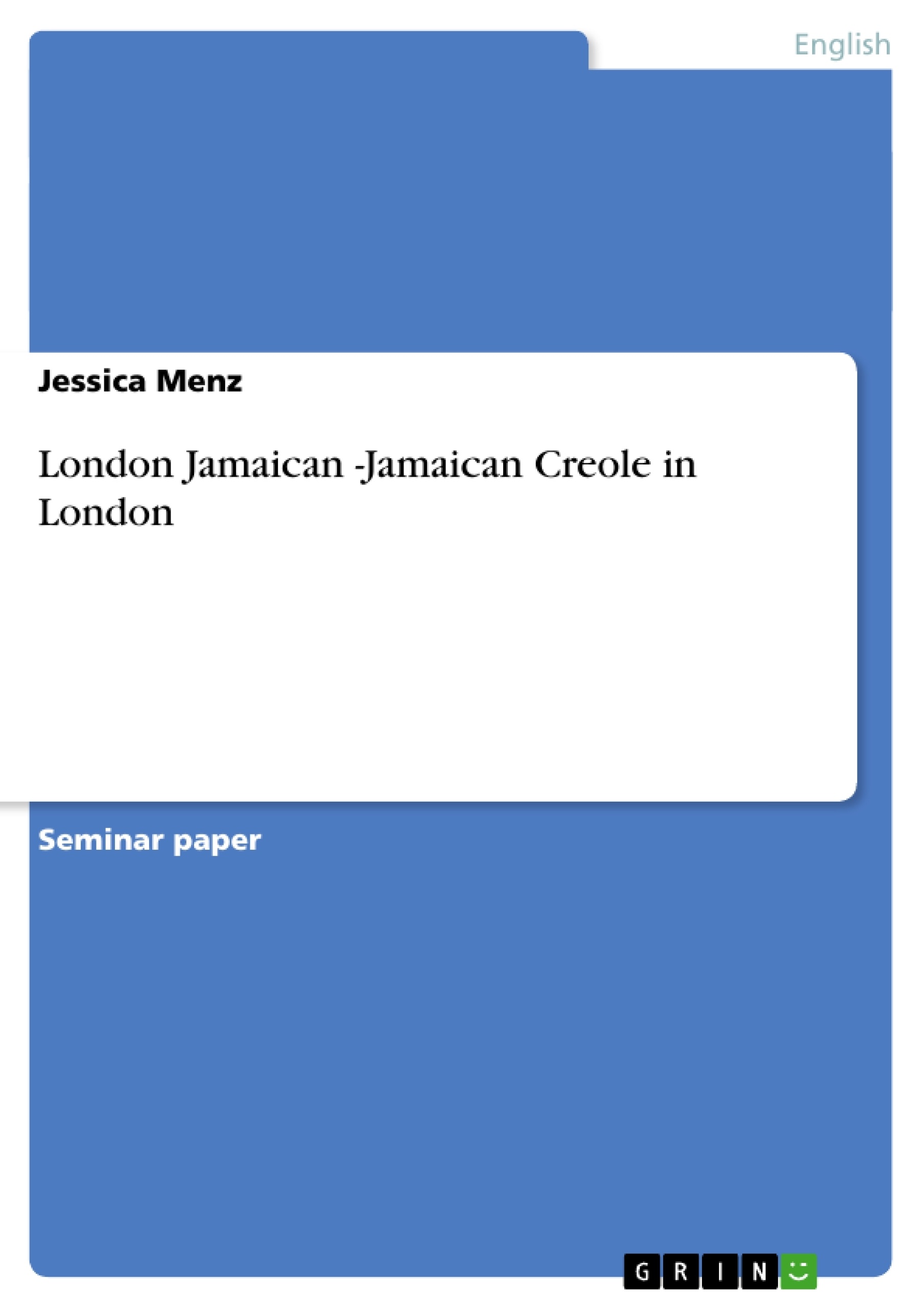Dealing with linguistics, one clearly realises that language is anything else but a static subject. Actually, language finds itself in constant change and is shaped by its speakers and the situation they are in. One of the many influences that form language has always been contact with new people and different languages, which for example happened when the Britains began to explore the world and brought English to the new continents. Many different new varieties and languages developed, one of them being Jamaican Creole. Far away from Great Britain it found its niche in Jamaica, where it is spoken by many as their native language.
Pidgins and Creoles are a well-explored subject in linguistics. But what happens when these languages return to the home countries of one of their root – languages? One of the classic examples is London Jamaican, spoken mostly by black immigrants and their descendants in London. In this paper I am going to outline the history and sociolinguistic situation of London Jamaican and its characteristic features regarding grammar and phonology. Also, I will describe how two extremely distinct varieties, Jamaican Creole and London English, have influenced each other and how London Jamaican functions in everyday contexts. In the early 16th century European nations began exploring the world and soon secured their newly gained territories by making them their colonies. The Caribbean Islands, including Jamaica as well, were colonized by the British, Spanish, Dutch, French and others. Together with the languages of the natives and of Africans, who came to the Caribbean as slaves, there was a strong demand for a common language to make communication between these different groups possible. This led to the development of pidgin languages, i.e. the mixture of at least two different languages. Such a new ‘lingua franca’ was mainly used in contact situations and not spoken as a native language. Often, this development resumed in the process of creolisation. Pidgins were becoming native languages, developing a more complex vocabulary and grammar. Usually creoles exist alongside more prestigious standard languages, e.g. Jamaican Standard English, of which the creole forms are often considered as ‘wrong’. In Jamaica, English was the lexifier, thus most Jamaican Creole words derive from British English.
Table of Contents
- Introduction
- Historical Background and Sociolinguistic Situation of London Jamaican
- How Creole came to Britain
- Reasons for the existence of London Jamaican
- Linguistic features of London Jamaican
- Comparing Jamaican Creole and London English
- Grammar
- Phonology
- Lexis
- London Jamaican
- Comparing Jamaican Creole and London English
- Practical example: Code-switching in Conversation
- Conclusion
Objectives and Key Themes
This paper explores the development and sociolinguistic situation of London Jamaican, a variety of English spoken by Black immigrants and their descendants in London. The paper aims to outline the history of London Jamaican, its relationship to Jamaican Creole and London English, and its role in everyday communication. It focuses on the specific linguistic features of London Jamaican, including grammar, phonology, and lexis, as well as the phenomenon of code-switching.
- The historical development of London Jamaican, tracing its roots to Jamaican Creole and the arrival of immigrants from the Caribbean.
- The sociolinguistic situation of London Jamaican, including its relationship to Standard English and other varieties of English spoken in London.
- The linguistic features of London Jamaican, specifically its grammar, phonology, and lexis.
- The phenomenon of code-switching in London Jamaican, examining how speakers alternate between Jamaican Creole and London English in conversation.
- The role of London Jamaican in everyday communication, particularly its use as a marker of ethnic identity and solidarity.
Chapter Summaries
- Introduction: This chapter introduces the topic of London Jamaican, highlighting the dynamic nature of language and the influence of contact with other languages. It provides a brief overview of the development of Jamaican Creole and its role as a native language in Jamaica. The chapter also establishes the focus of the paper: the historical background, sociolinguistic situation, and linguistic features of London Jamaican.
- Historical Background and Sociolinguistic Situation of London Jamaican: This chapter delves into the historical context of London Jamaican. It discusses the colonization of the Caribbean Islands and the development of pidgin languages, which later evolved into creoles. The chapter then focuses on the immigration of Caribbean people to Britain after World War II and the emergence of London Jamaican as a distinct variety of English. It examines the process of decreolisation and recreolisation, highlighting the role of media and social networks in shaping the language. The chapter concludes by exploring the specific reasons for the existence of London Jamaican, including the influence of the Rastafari movement and reggae music.
- Linguistic features of London Jamaican: This chapter delves into the linguistic features of London Jamaican, examining its grammar, phonology, and lexis. It compares these features with those of Jamaican Creole and London English, highlighting the similarities and differences between the three varieties. The chapter also explores the ways in which London Jamaican has been influenced by both Jamaican Creole and London English, demonstrating the dynamic nature of the language.
- Practical example: Code-switching in Conversation: This chapter presents a practical example of code-switching in a conversation involving London Jamaican. It analyzes the different contexts and reasons for the use of Jamaican Creole and London English elements in conversation. This chapter provides a deeper understanding of how London Jamaican functions in everyday communication and the social significance of code-switching.
Keywords
This paper focuses on the linguistic features, sociolinguistic situation, and historical development of London Jamaican. Key concepts include Jamaican Creole, London English, code-switching, decreolisation, recreolisation, Rastafari movement, reggae music, ethnic identity, and solidarity.
- Citation du texte
- Jessica Menz (Auteur), 2004, London Jamaican -Jamaican Creole in London, Munich, GRIN Verlag, https://www.grin.com/document/91489




